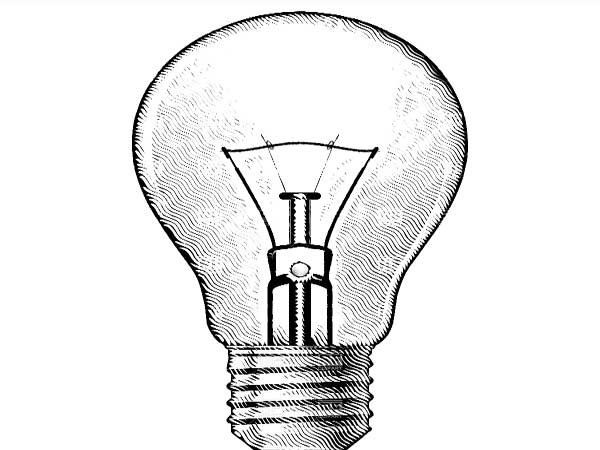
The word Budget was derived from the Middle English bowgette, which came from Middle French bougette, which in turn is a diminutive of bouge, meaning a leather bag
Indian budget is presented in Parliament on a date fixed by the President. The Budget speech of the finance minister is usually divided in two parts. Part A deals with general economic survey of the country while Part B relates to taxation proposals
The Finance Bill seeking to give effect to the Government’s taxation proposals which is introduced in Lok Sabha immediately after the presentation of the General Budget, is taken up for consideration and passing after the Appropriation Bill is passed
The employees printing the Budget papers are kept in complete isolation (quarantine) in the Finance Ministry for one week before the Budget
The Budget is the most extensive account of Government finances in which revenues from all sources and expenses of all activities undertaken are aggregated. It comprises the revenue budget and the capital budget. It also contains estimates for the next fiscal year called budgeted estimates
The Ministry of Finance, Planning Commission, Administrative Ministries and the Comptroller & Auditor General are the main players in the declaration of the Union Budget
Budget was first introduced in India on 7th April, 1860 from East-India Company to British Crown
The first Finance Member, who presented the Budget in India, was James Wilson on 7th April, 1860
The precedent for the convention of the budget speech started at 5:00 pm was set by Sir Basil Blackett in 1924. According to him, this was done to give some relief to officials who worked all night to present a financial statement
After Independence, India’s first Finance Minister R.K. Shanmukham Chetty, presented the first Budget at 5 pm on 26th November, 1947
Independent India's First Budget spanned a period of just 7-1/2 months from August 15, 1947 to March 31, 1948
The word “Interim Budget” was for the first time introduced by R.K. Shanmukham Chetty in his budget speech for 1948-49. From then onwards an interim budget began to mean a budget for a short period
The first Budget of the Republic of India was presented by John Mathai on February 28, 1950
Planning Commission came into existence while presenting the budget for 1950-51, the first budget for the Republic of India
C.D. Deshmukh, the first Indian Governor of the Reserve Bank of India as well as the Finance Minister, presented an interim budget for 1951-52
Budget papers began to be prepared in Hindi also from 1955-56
'Krishnamachari-Kaldor's 1957 budget featured the first attempt to distinguish between active income (salaries or business) and passive income (interest or rent)
Jawaharlal Lal Nehru was the first prime minister to present the budget when he held the union finance minister portfolio in 1958-59
Morarji Desai has presented the maximum number of budgets so far- ten. They included five annual and one interim budget in the second tenure when he was both Finance Minister and Deputy Prime Minister
Morarji Desai presented annual budgets for each year from 1959-60 to 1963-64 and the interim budget for 1962-63. The annual budgets for three years between 1967-68 and 1969-70 and the interim budget for 1967-68 were also presented by Morarji Desai
TT Krishnamachari as the finance minister during 1964-65 introduced the voluntary disclosure of concealed income scheme in India for the first time
The 1965-66 budgets contained the first disclosure scheme for black money
Budget of 1973-74 is known for ‘Black Budget’ in India. During this year budget deficit in 1973-74 was Rs 550 crore
Morarji Desai was the only Finance Minister to present two budgets on his birthday – in 1964 and 1968 on February 29
Indira Gandhi was the only woman Finance Minister who took over the Finance portfolio from 1970 to 1971
V.P. Singh as finance minister dwelt excessively on concessions for poor. In his 1986 budget, he proposed railway porters, bank loans with a subsidy for rickshaw pullers, cobblers and setting up of a small industries development bank, an accident insurance scheme for municipal sweepers
R Venkataraman is the only finance minister of India who later also served as the President of India from 1987-92
Jawaharlal Lal Nehru, Indira and Rajiv Gandhi have presented the budget while serving as the Prime Minister of India
Corporate tax (today is known as Minimum Alternate Tax) was first introduced by Rajiv Gandhi in 1987 Budget
This was the first occasion when the interim and final budgets of 1991-92 were presented by two ministers of two different political parties. Yashwant Sinha presented the interim budget while Manmohan Singh presented the final budget
The Epochal Budget of Manmohan Singh 1992-93, reduced peak import duty from 300 plus percent to 50 percent, liberalized the economy and promoted foreign investments in India
Manmohan Singh during his speech for the 1992-93 Budget, said, "It is said that child is the father of the man, but some of our taxpayers have converted children into tax shelters for their fathers.
Services Tax was introduced by Manmohan Singh in budget 1994 to tap the growing sector in Indian economy
Three interim budgets were presented in the 1990s. While Yashwant Sinha presented the interim budget for 1991-92 and 1998-99, Dr. Manmohan Singh presented for the year 1996-97
The final budget for 1996-97 was presented by P. Chidambaram then Tamil Maanila Congress. It was the second time that interim and final budgets were presented by two ministers of different political parties





